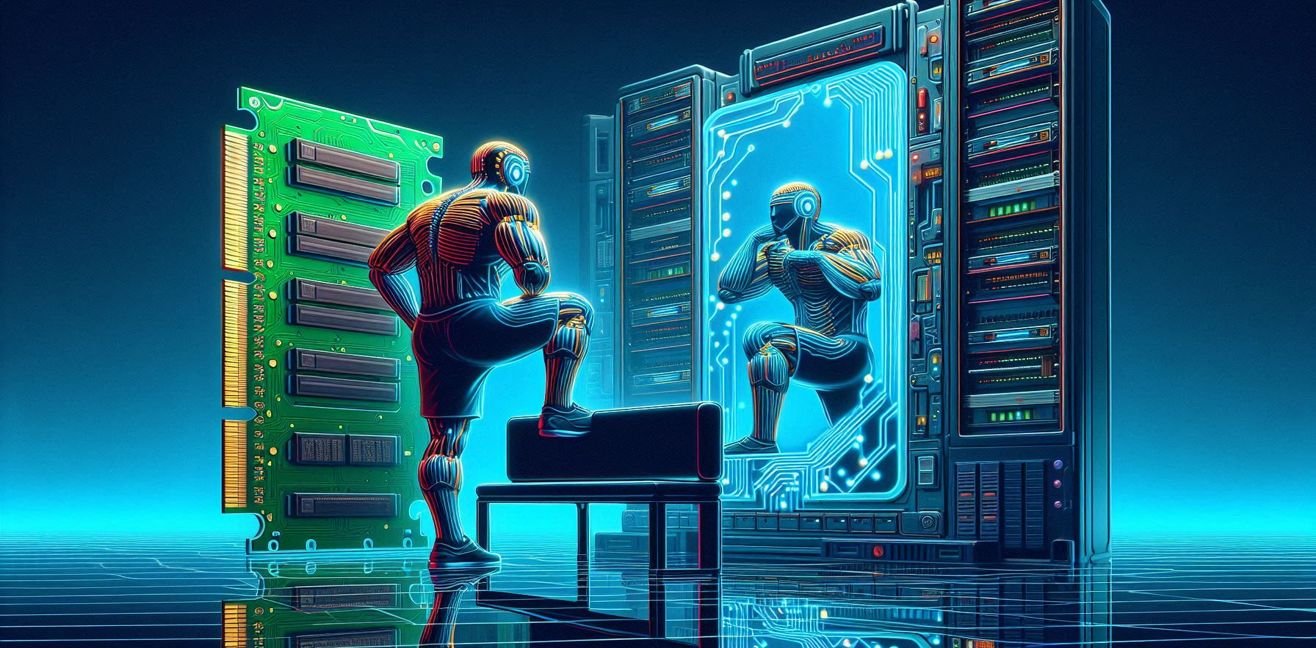If the CPU is the heart of a computer, RAM is its soul. 🧘♂️ Without RAM, the CPU can still function, but it’s like someone trying to start the day without their morning coffee: confused, distracted, and with zero performance. ☕ But darling, RAM has another critical role: reliability.
Especially in enterprise systems, data centers, banking infrastructures, and hospital servers, when RAM fails, it doesn’t just mean a blue screen—it can mean customer loss, financial damage, or even life-threatening risks. That’s exactly why engineers developed fault-tolerant technologies for RAM: Spare Mode, Mirroring, and RAID for RAM.
Now, let’s dive into each of them with both technical depth and a playful twist.
1️⃣ Spare Mode – RAM’s Substitution Bench ⚽
The best way to explain Spare Mode is with a football analogy:
- There are 11 RAM modules on the field, but 1 spare RAM module is waiting on the bench.
- If one of the active RAM modules suddenly says, “I’m done” and fails, the spare DIMM jumps into the game.
- The system enters a brief “recovery mode,” but continues running.
Technical Details 🔍
- This setup uses ECC (Error-Correcting Code) RAM.
- ECC can fix single-bit errors, but for serious hardware failures, ECC alone isn’t enough. That’s when Spare Mode takes over.
- BIOS/firmware continuously scans the RAM. If a faulty module is detected, the hot-spare DIMM replaces it.
Advantages ✅
- Simple and cost-effective solution.
- The server doesn’t need to be shut down to isolate the faulty module.
Disadvantages ❌
- The spare RAM remains unused until failure—part of the capacity is always idle.
- During failover, there may be a brief performance dip.
📌 Summary: Spare Mode is like “a substitute player always ready to step onto the field.” Critical yet budget-friendly.
2️⃣ Mirroring – RAM’s Soulmate 🪞
As the name suggests, Mirroring means writing the same data to two RAM modules simultaneously.
- Every piece of data is stored in real time across two different DIMMs.
- If one fails, the other says, “Don’t panic, darling, I’ve got your back”, keeping the system running. 💕
Technical Details 🔍
- Mirroring is similar to RAID 1, but applied to RAM instead of disks.
- The memory controller writes every transaction to two modules.
- During read operations, the system retrieves data from the healthy copy.
Advantages ✅
- Maximum reliability. Data loss is nearly impossible.
- Users won’t even notice a failure—it’s completely seamless.
Disadvantages ❌
- Half the capacity is wasted (because the same data is stored twice).
- Higher hardware costs.
📌 Summary: Mirroring is like a loyal partner who says, “My data lives and dies with me.” Safe but expensive.
3️⃣ RAID for RAM – The Power of Teamwork 🏎️
“RAID for RAM? Really?” Yes, darling. Normally, RAID is associated with storage, but in high-reliability systems, similar concepts are applied to RAM.
Types of RAID RAM 🔍
- RAID 0 (Striping): Splits data across different RAM modules.
- Advantage: Performance boost. 🚀
- Disadvantage: Zero security. If one module fails, all data is lost. 💥
- RAID 1 (Mirroring): The mirroring we just discussed.
- Advantage: Maximum security.
- Disadvantage: Half the capacity wasted.
- RAID 5 (Parity): Splits data and writes parity (redundancy) information.
- Advantage: Balance between performance and reliability. ⚖️
- Disadvantage: Complex management, requires extra processing power.
Advantages ✅
- Combines performance and reliability.
- Preferred in large-scale data centers.
Disadvantages ❌
- Complex setup.
- Requires strict hardware and software compatibility.
📌 Summary: RAID for RAM works on the principle of “If we play as a team, we win.” But managing the team can be a headache. 🤯
🔑 Where to Use Each Technology?
- Spare Mode: Mid-level enterprise servers. Affordable but still reliable.
- Mirroring: Banking, finance, healthcare systems—where data loss is catastrophic.
- RAID RAM: Large data centers, HPC (High-Performance Computing), telecom infrastructure. When you need both speed and safety.
🎯 Final Note
Darling, RAM is not just about asking “How many GBs?”. Behind it lies serious engineering, reliability strategies, and business continuity. Thanks to Spare Mode, Mirroring, and RAID RAM technologies:
- Data isn’t lost,
- Systems don’t go down,
- And our nerves remain intact. 🙃
In short, RAM technologies are the unsung superheroes of the computing world. 🦸♂️




